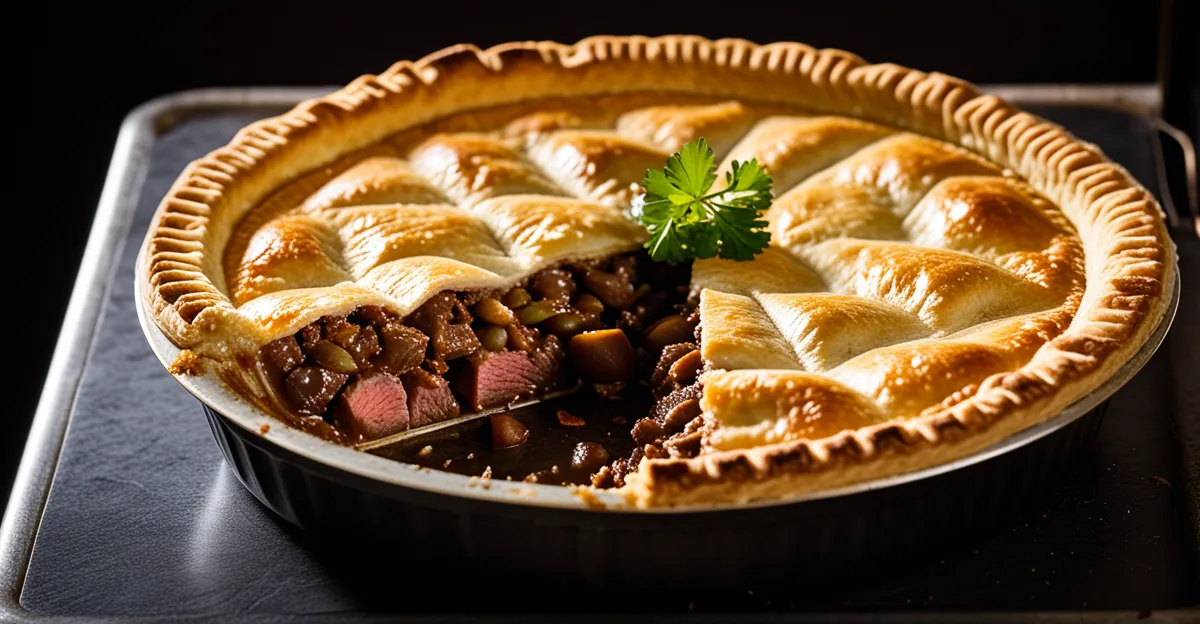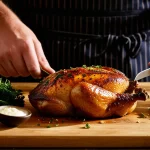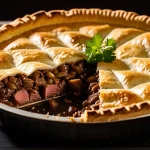Essential Ingredients and Equipment for Steak and Kidney Pie
Before starting on a steak and kidney pie, gathering the right steak and kidney pie ingredients is crucial. The classic choice includes braising cuts of beef like chuck or skirt steak, which remain tender after slow cooking. For kidneys, lamb or beef kidneys are preferred; they offer a mild flavor that complements the steak well. Other essential ingredients include onions for sweetness, beef stock to enrich the filling, and Worcestershire sauce for depth. Some recipes also suggest optional ingredients like mushrooms or a splash of stout for enhanced taste or dietary preferences.
Equally important are the required kitchen tools and utensils. A sturdy heavy-bottomed pan or casserole dish is vital for browning and slow-cooking the meat. A sharp knife ensures precise dicing of steak and kidneys, while a cutting board must be clean to avoid cross-contamination. For the pie making essentials, a rolling pin and pie dish of adequate size are necessary to roll and shape the pastry correctly.
Have you seen this : How Can British Culinary Traditions Enhance Your Seasonal Cooking?
In summary, a careful selection of steak and kidney pie ingredients paired with the correct pie making essentials ensures a flavorful filling and a successful pie assembly.
Preparing Steak, Kidney, and Filling
Properly preparing steak for pie starts with selecting tender cuts like chuck or skirt steak, trimmed of excess fat for a balanced texture. Cut the steak into uniform, bite-sized pieces to ensure even cooking. When prepping kidneys for cooking, begin by soaking them in cold water or milk for at least 30 minutes. This reduces any strong odors and improves flavor. After soaking, trim away any white membrane and core to remove gristle, then dice the kidneys to match the steak size.
Also to discover : Why Is Traditional UK Cooking Making a Comeback?
For the pie filling technique, start by gently sautéing onions until translucent to build sweetness. Brown the steak pieces in a hot pan to seal in juices, then add the kidneys, cooking just until they change color to maintain tenderness. Season well with salt, pepper, and a splash of Worcestershire sauce for depth. Slowly add beef stock and simmer to tenderize the meat while blending flavors. Optional ingredients like mushrooms or a splash of stout can enrich the filling further. Using this method ensures a moist, flavoursome filling that contrasts perfectly with the crisp pastry of the steak and kidney pie.
Crafting the Perfect Pastry Crust
Creating a pie pastry that is both tender and flaky starts with choosing the right ingredients and technique. A classic shortcrust pastry recipe typically involves cold butter, plain flour, and a pinch of salt, combined with just enough water to bind the dough. Keeping ingredients chilled is crucial; it prevents butter from melting early, which helps develop the pastry’s flaky texture. After mixing, the dough should be wrapped and chilled for at least 30 minutes to relax gluten and ease rolling.
When rolling out pastry, use a light dusting of flour to avoid sticking, and roll from the center outward evenly, maintaining a consistent thickness to ensure uniform baking. The pastry should be large enough to line the pie dish with some overhang for sealing. Carefully transfer the pastry to the dish, gently pressing to fit corners without stretching, which might cause shrinkage during baking.
Tips for a golden, crisp crust include blind baking the base for a few minutes to prevent sogginess, and brushing the top with beaten egg or milk for a rich colour. Avoid overworking the dough to maintain the crumbly, melt-in-your-mouth quality prized in homemade pies. These pie making essentials elevate a steak and kidney pie’s overall experience.
Assembling and Baking the Pie
Once your pie filling is ready and your pastry is prepared, it’s time to focus on assembling steak and kidney pie to ensure an even bake and flawless finish. Begin by spooning the cooled filling evenly into the lined pie dish, avoiding overfilling to prevent bursting during baking. Next, roll out the top crust slightly larger than the dish, which allows for a secure seal over the edges. Use cold water or beaten egg to moisten the rim before pressing the edges firmly together, crimping if desired, to lock in moisture.
Creating steam vents in the top pastry is essential; these small slashes or holes allow steam to escape, preventing soggy crust and uneven cooking. Decorative pastry shapes can be added now but keep vents unobstructed for proper airflow.
For baking instructions, preheat the oven to around 200°C (400°F). Bake the pie on the middle rack for about 25 minutes to set the crust, then reduce to 180°C (350°F) and bake for another 35–45 minutes until the pastry is golden and crisp. Tent loosely with foil if the crust browns too quickly. This technique ensures a tender, juicy filling with a perfectly baked pie crust.
Serving, Storing, and Reheating Steak and Kidney Pie
Serving steak and kidney pie traditionally involves pairing it with hearty sides like mashed potatoes, seasonal vegetables, or mushy peas, enhancing the meal’s comfort-food appeal. For a balanced plate, consider steamed greens that complement the rich pie filling without overpowering it. When serving, cut the pie into even portions using a sharp knife to retain its shape and prevent the filling from spilling.
Proper storage is key to maintaining the flavour and safety of steak and kidney pie leftovers. Once cooled to room temperature, wrap the pie tightly with cling film or foil, or store it in an airtight container. It can be safely refrigerated for up to three days. For longer preservation, freezing is possible but may slightly affect pastry texture.
Reheating steak and kidney pie requires care to avoid soggy pastry. Oven reheating at 160°C (320°F) for 15–20 minutes is ideal, ensuring the filling warms through and the crust regains crispness. Cover the pie loosely with foil to prevent excessive browning. Microwave reheating is faster but may cause a less crisp crust; placing the pie on a microwave-safe plate with a paper towel underneath helps absorb moisture.
Following these pie making essentials ensures your steak and kidney pie remains delicious over multiple meals.









